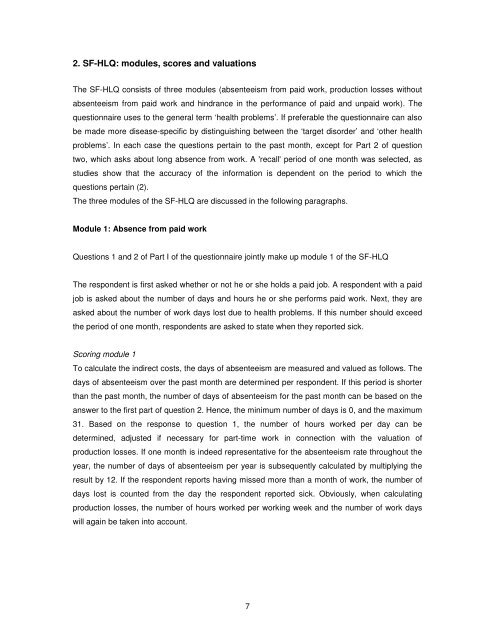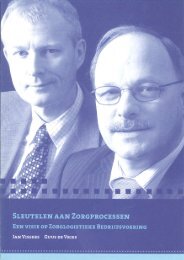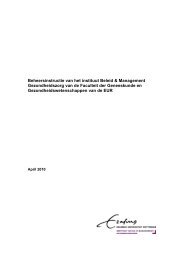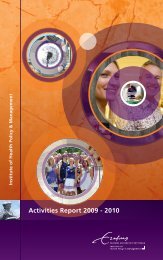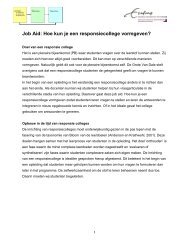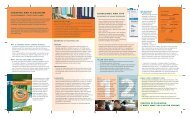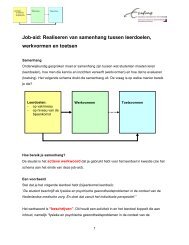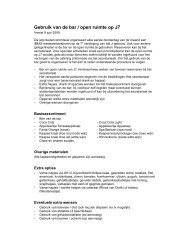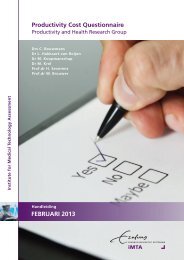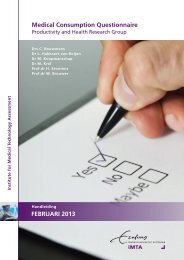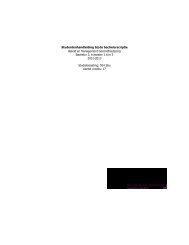Manual Short Form- Health and Labour Questionnaire (SF-HLQ)
Manual Short Form- Health and Labour Questionnaire (SF-HLQ)
Manual Short Form- Health and Labour Questionnaire (SF-HLQ)
Create successful ePaper yourself
Turn your PDF publications into a flip-book with our unique Google optimized e-Paper software.
2. <strong>SF</strong>-<strong>HLQ</strong>: modules, scores <strong>and</strong> valuationsThe <strong>SF</strong>-<strong>HLQ</strong> consists of three modules (absenteeism from paid work, production losses withoutabsenteeism from paid work <strong>and</strong> hindrance in the performance of paid <strong>and</strong> unpaid work). Thequestionnaire uses to the general term ‘health problems’. If preferable the questionnaire can alsobe made more disease-specific by distinguishing between the ‘target disorder’ <strong>and</strong> ‘other healthproblems’. In each case the questions pertain to the past month, except for Part 2 of questiontwo, which asks about long absence from work. A 'recall' period of one month was selected, asstudies show that the accuracy of the information is dependent on the period to which thequestions pertain (2).The three modules of the <strong>SF</strong>-<strong>HLQ</strong> are discussed in the following paragraphs.Module 1: Absence from paid workQuestions 1 <strong>and</strong> 2 of Part I of the questionnaire jointly make up module 1 of the <strong>SF</strong>-<strong>HLQ</strong>The respondent is first asked whether or not he or she holds a paid job. A respondent with a paidjob is asked about the number of days <strong>and</strong> hours he or she performs paid work. Next, they areasked about the number of work days lost due to health problems. If this number should exceedthe period of one month, respondents are asked to state when they reported sick.Scoring module 1To calculate the indirect costs, the days of absenteeism are measured <strong>and</strong> valued as follows. Thedays of absenteeism over the past month are determined per respondent. If this period is shorterthan the past month, the number of days of absenteeism for the past month can be based on theanswer to the first part of question 2. Hence, the minimum number of days is 0, <strong>and</strong> the maximum31. Based on the response to question 1, the number of hours worked per day can bedetermined, adjusted if necessary for part-time work in connection with the valuation ofproduction losses. If one month is indeed representative for the absenteeism rate throughout theyear, the number of days of absenteeism per year is subsequently calculated by multiplying theresult by 12. If the respondent reports having missed more than a month of work, the number ofdays lost is counted from the day the respondent reported sick. Obviously, when calculatingproduction losses, the number of hours worked per working week <strong>and</strong> the number of work dayswill again be taken into account.7


